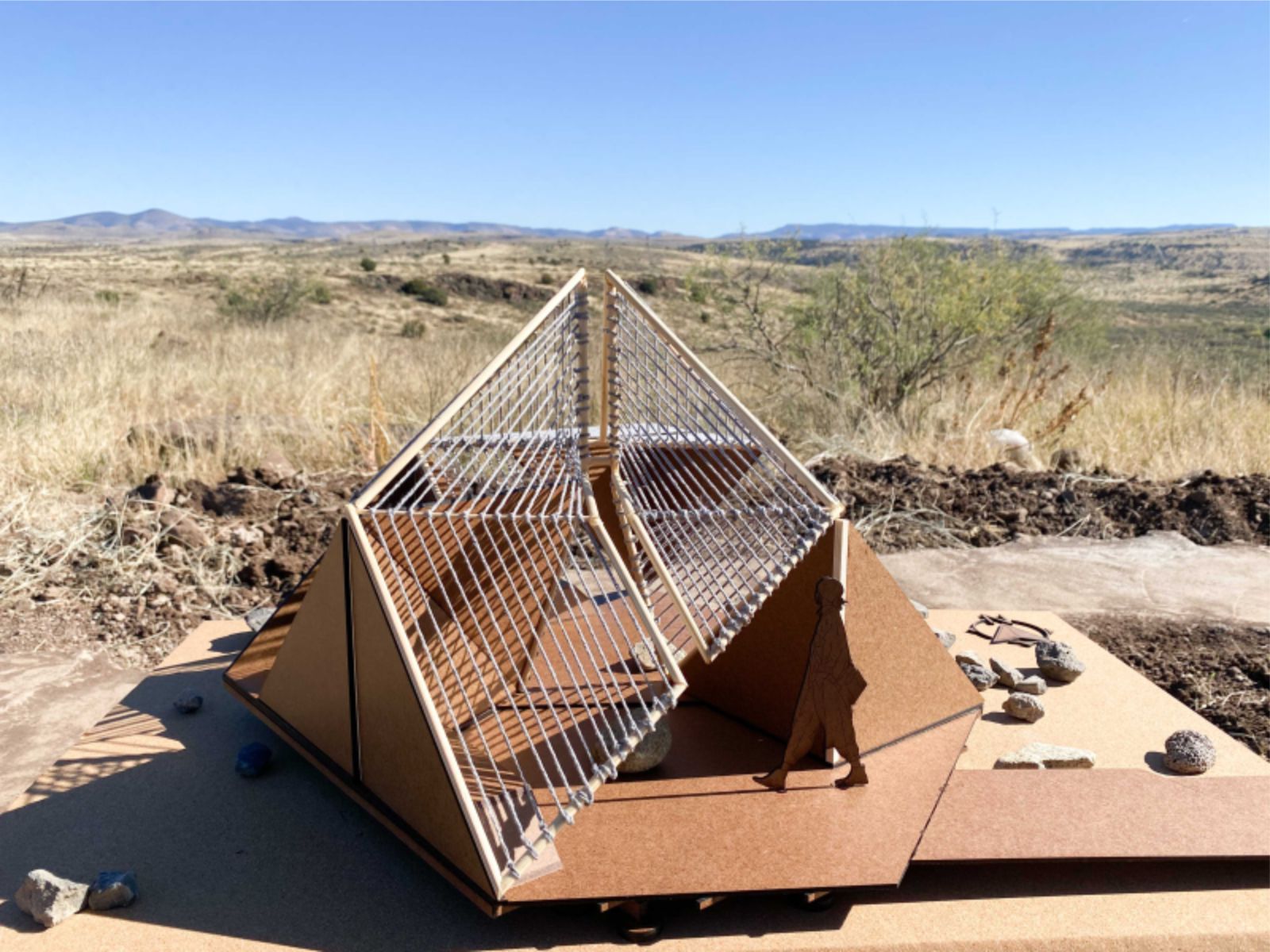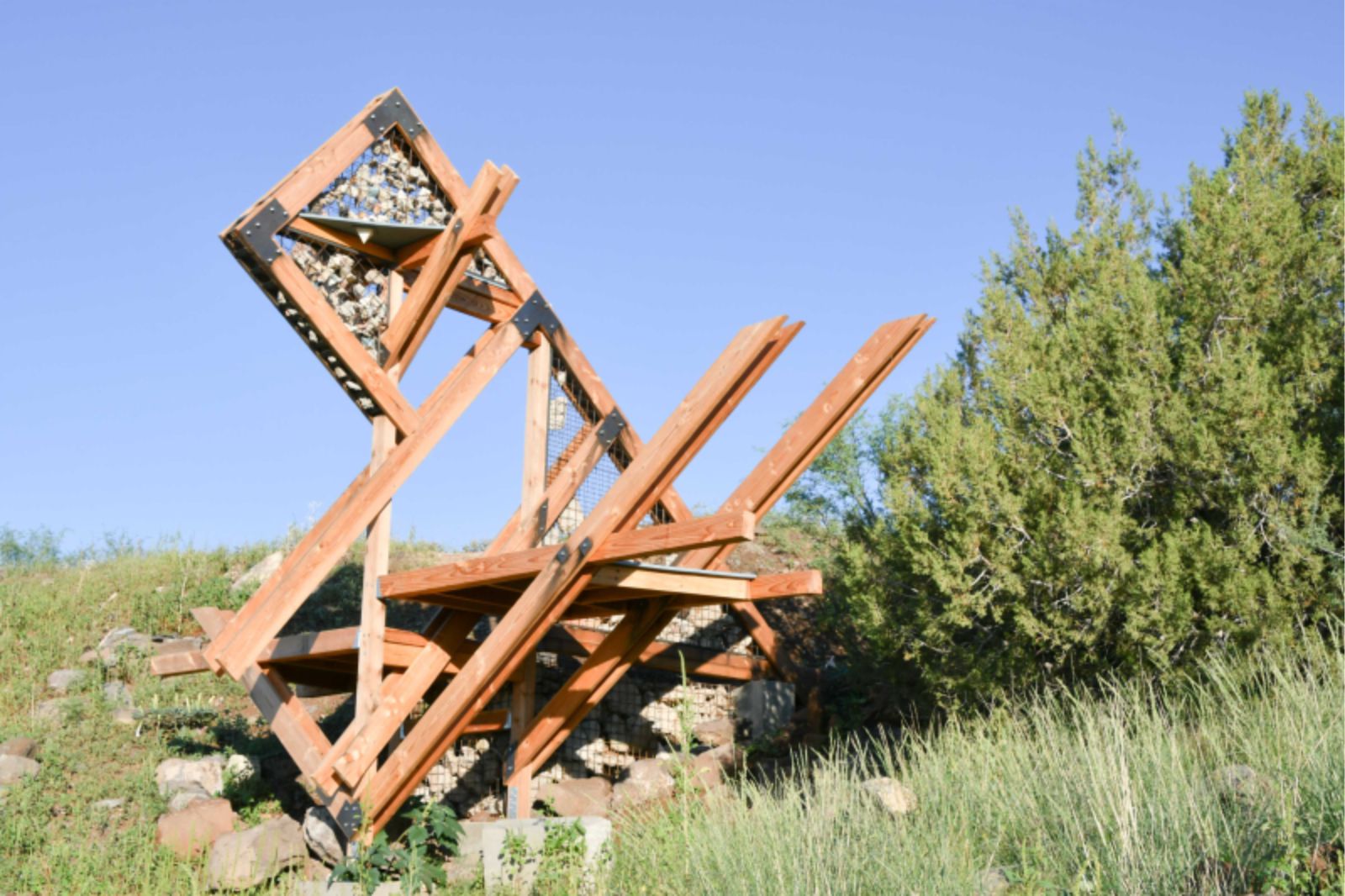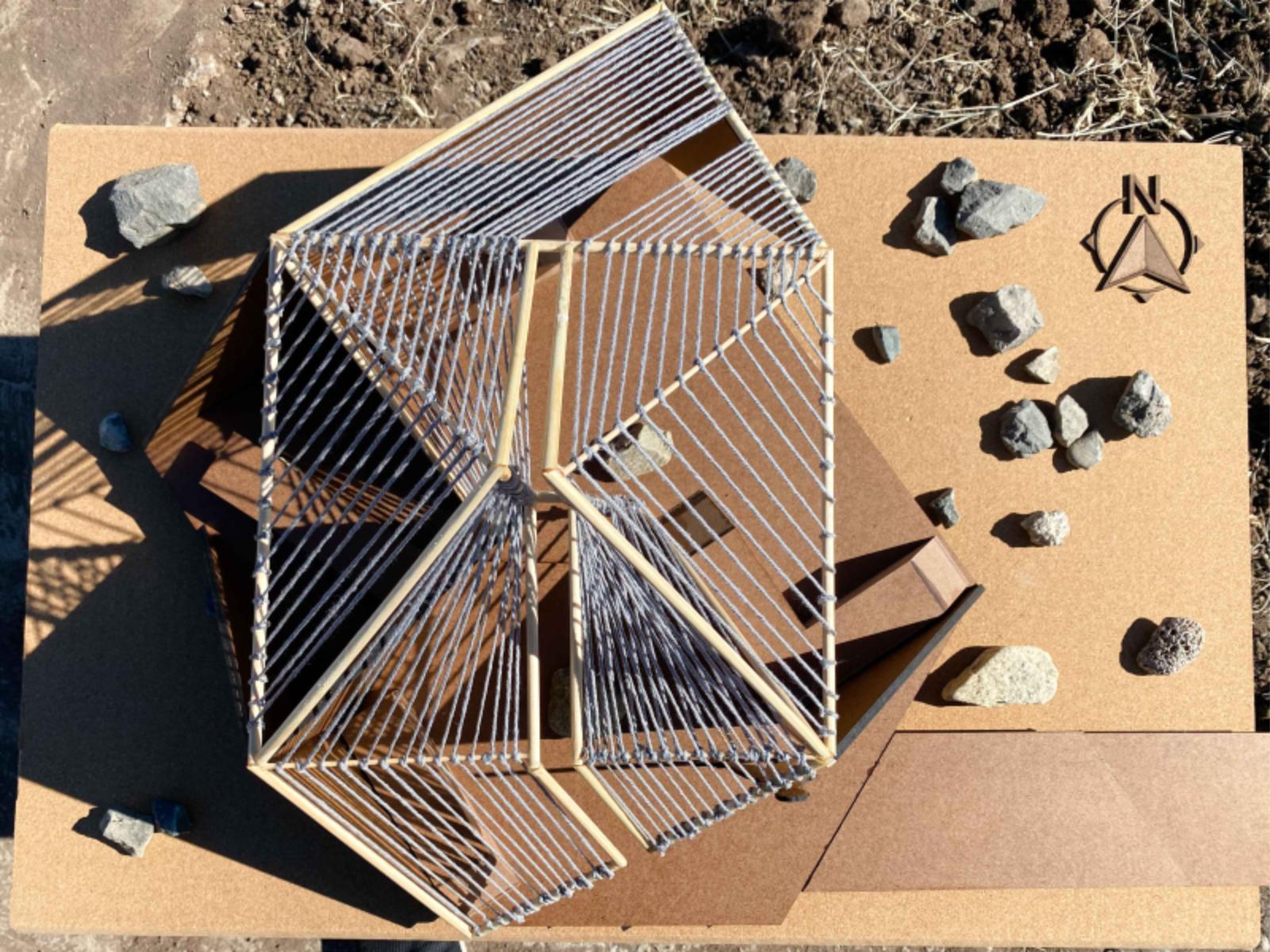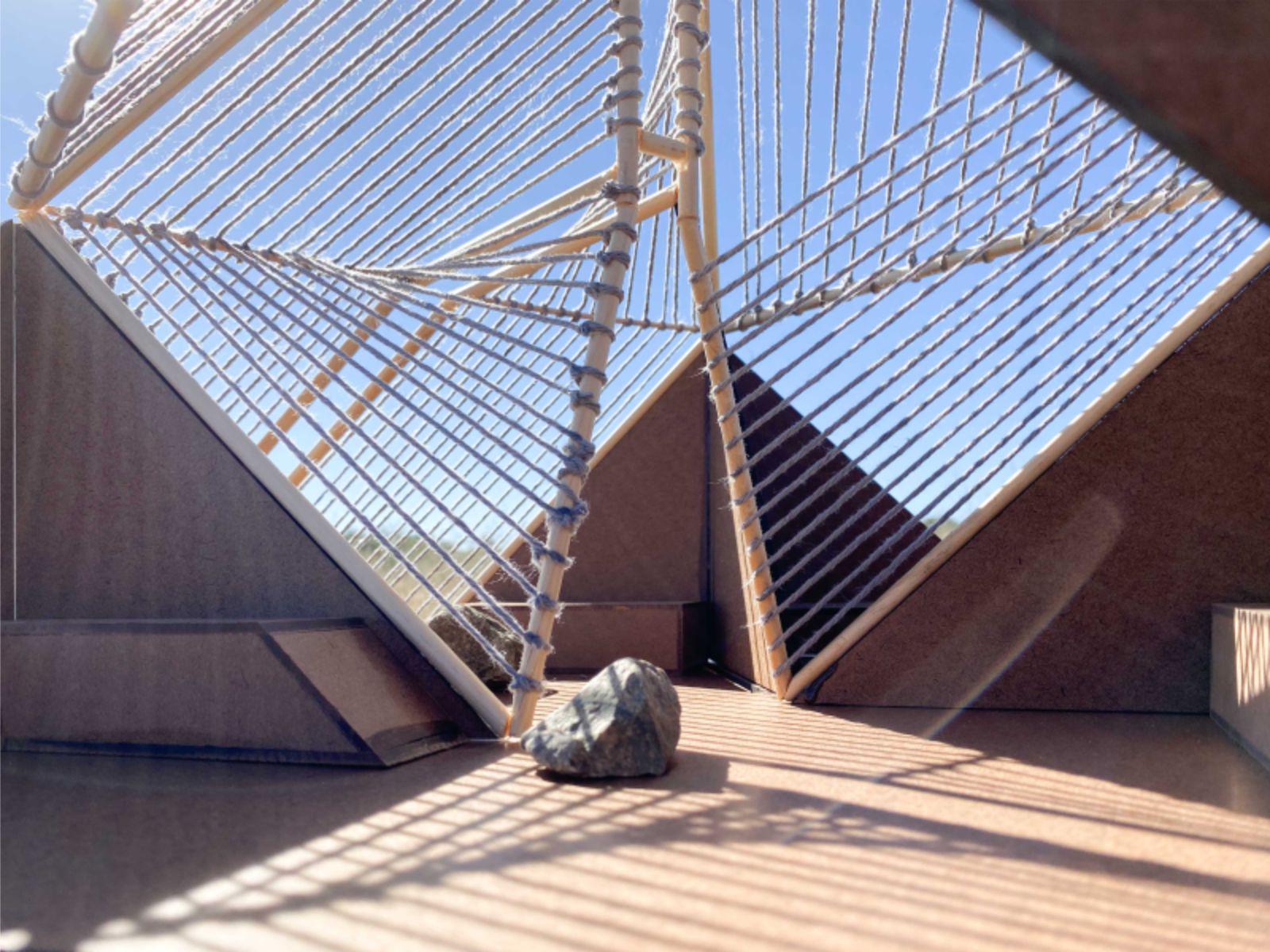TSOA has landed and is thriving at Arcosanti, the experimental desert community in Arizona owned and operated by The Cosanti Foundation, a fellow nonprofit. The school retains its longtime core values, offering a contemporary design education based on sustained immersive, experiential and experimental learning. But it has set a new course by encouraging a broader definition of community, and a more dynamic interpretation of the intersection between architecture and the environment.
At TSOA, M.Arch students can participate in The Shelter Program in lieu of a traditional thesis, a unique hallmark of the student experience. Students design and build structures to be used forthe community or as housing for future students, immersing themselves in a process of testing, investigating, and discovering tectonic and material solutions. The approach is collaborative, and often results in new prototypes and processes.

These “shelters”, created by students in response to the landscape and desert climate, and evolving from the school’s longstanding tradition of shelter construction established by the Taliesin Fellowship in the 1930s, reflect the school’s commitment to the relationship between nature and the built environment, and to learning by doing. By confronting the realities of construction, all projects test and explore the notion of “shelter”, expanding its possible outputs and underlining building as a critical practice.
Within the larger context of the thesis, each student also explores the potential for these concepts to grow, translate, and connect to larger global issues. The 2022 student Shelters are designed by Archie Kinney, Richard Sanchez, and William Palmer. Archie Kinney explores how the act of building can contribute to a process of landscape remediation in his project, The Octahedron. An octahedral timber structure integrated with a series of gabion walls displays the material artifacts of the remediation process along with fragments of Arcosanti’s own history of construction since the 1970s.

The structure is a framework for play and improvisation, with an open-ended resolution that suggests that it will grow and continue to collect more artifacts over time. The Octahedron serves as a viewing deck for the impressive high desert landscape, while its various platforms are sized to accommodate elements such as a mattress or a hammock. Throughout the process Kinney collaborated with community members at Arcosanti, including the ceramics studio that produces Cosanti Originals’ ceramic bells.
Richard Sanchez reframes common narratives of earth construction through the investigation of ethical labor practices and local material selection, using clay gathered from the neighboring Agua Fria River with help of fellow students and Arcosanti residents. Earth Shed, built in collaboration with Arcosanti’s Agriculture department, combines techniques in earth construction with light timber framing, resulting in a structure that is both hybrid in type, but also hybrid in use.

Earth Shed’s interior takes on the characteristics of a tatami room, scaled to living and socializing, while offering spaces for drying vegetables harvested from the field on which it is built. Over time, the exterior walls will be completely plastered with clay, allowing a new collective ritual of local clay-harvesting and application to continue. William Palmer’s public pavilion, Vergence, is the outcome of his thesis research in professional practice, locating opportunities for architects to recover agency in the design process.
Palmer embarked on the ambitious design of a tensile shading structure made of approximately 1500 feet of jute rope, hovering over a floating wooden deck that shifts in elevation. The project serves as its own document of budgetary, design, and labor-related constraints, integrating the variable sizing of donated materials, flexibility of detailing, and untrained volunteer assistance on construction despite its complexity. Source and photos Courtesy of TSOA.







